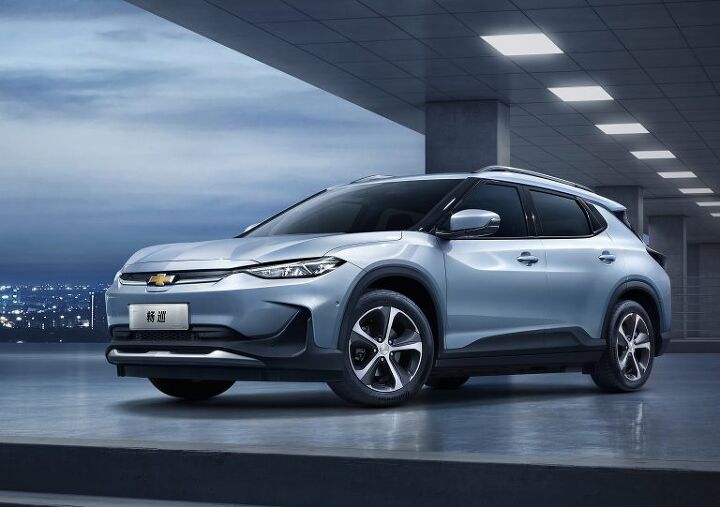Chevrolet's First Chinese EV Hits the Market at a Difficult Time

The price seems right, the range looks good, and the body? Well, we’ve seen far more ungainly vehicles achieve success in the past. The Chevrolet Menlo, the bowtie brand’s first EV in China, went on sale in the troubled nation last week with both pros and cons in its corner.
For American viewers who can only look at the Bolt and wish it looked like this, there’s clearly design hope for a U.S.-bound model.
The Menlo shares its China-only SAIC-GM platform with the Buick Velite 6, with more inches placed between the axles then the Chevy Bolt and its overseas derivatives. Starting price is a rock-bottom (for U.S. buyers) $22,600, give or take a few bucks depending on up-to-the-minute exchange rates. Range amounts to 410 km (255 miles) on the optimistic New European Driving Cycle.
General Motors is in it to win in China’s low-priced “new energy vehicle” game — a market with no shortage of similarly low-cost competition.
The extra cargo capacity over domestic EV city cars and sedan contenders, plus the attributes mentioned above, give the Menlo a decent shot at capturing buyers. Also in its favor are a government incentive reduction that’s now been put on hold. The subsidy cut was to go into effect on July 1st, but last year’s cratering of the Chinese new car market, which is biased in favor of EVs, led the one-party state to hold off on further reductions.
The biggest threat to near-term Menlo sales is, obviously, the ongoing coronavirus epidemic. Last week, the Chinese government announced an easing of travel restrictions out of fear of further economic damage, though restrictions ramped up in the already locked-down Hubei province, home to much of the country’s manufacturing base, in addition to roughly 60 million residents.
The first half of February saw new car sales drop 92 percent, the result of strict quarantine measures. In January, sales of all new vehicles fell 43 percent, with battery electric vehicles down 68 percent, year over year.
Even before the viral outbreak, China’s GDP was expected to drop in 2020 — a repeat of 2019. However, the Menlo’s low purchase price places it within range of a large swath of Chinese society, and sales figures from the supposedly disastrous 2019 reveal buoyancy in the EV market, despite the subsidy slashing. While new energy vehicles fell over 3 percent last year, the drop had its genesis in the public’s sudden U-turn on plug-in hybrids. Actual electric vehicles enjoyed growth of 43 percent.
Hosting design traits seen on the upcoming U.S.-market Chevrolet Trailblazer, the Menlo gives us a good idea of what a new domestic Chevy crossover EV could look like. GM plans to build the Bolt EUV at its Orion Township, Michigan assembly plant, with a launch occurring late this year.
[Images: General Motors]

More by Steph Willems
Latest Car Reviews
Read moreLatest Product Reviews
Read moreRecent Comments
- Namesakeone Doesn't China hold a lot of our debt? I honestly don't know, but if they do, how high will the tarriffs climb before China retaliates--by calling in that debt? And really screwing our economy like no influx of Chinese products can? Again, I don't know. If someone out there in TTACland knows better than me, please enlighten me.
- ToolGuy I'm considering purchasing a few new Aston Martin vehicles.
- Spamvw 13 spoke rims from a 2005 Golf, I approve, as I have them on my '02 JSW TDI that hit 480k today.
- ToolGuy New car prices make me queasy will this help with that?
- Kcflyer On the bright side I just saw a commercial where the army is advertising the fact that women are now part of tank crews. I'm sure the compromises necessary to put women in front line combat arms won't in any way weaken our armed forces ability to win wars in the future. But, hey, at least that new BYD SUV will cost more, thanks uncle Joe.


































Comments
Join the conversation
A Chevy full of Chinesium - couldn't be any worse than a Malibu, right?
virus is a cover for 5G